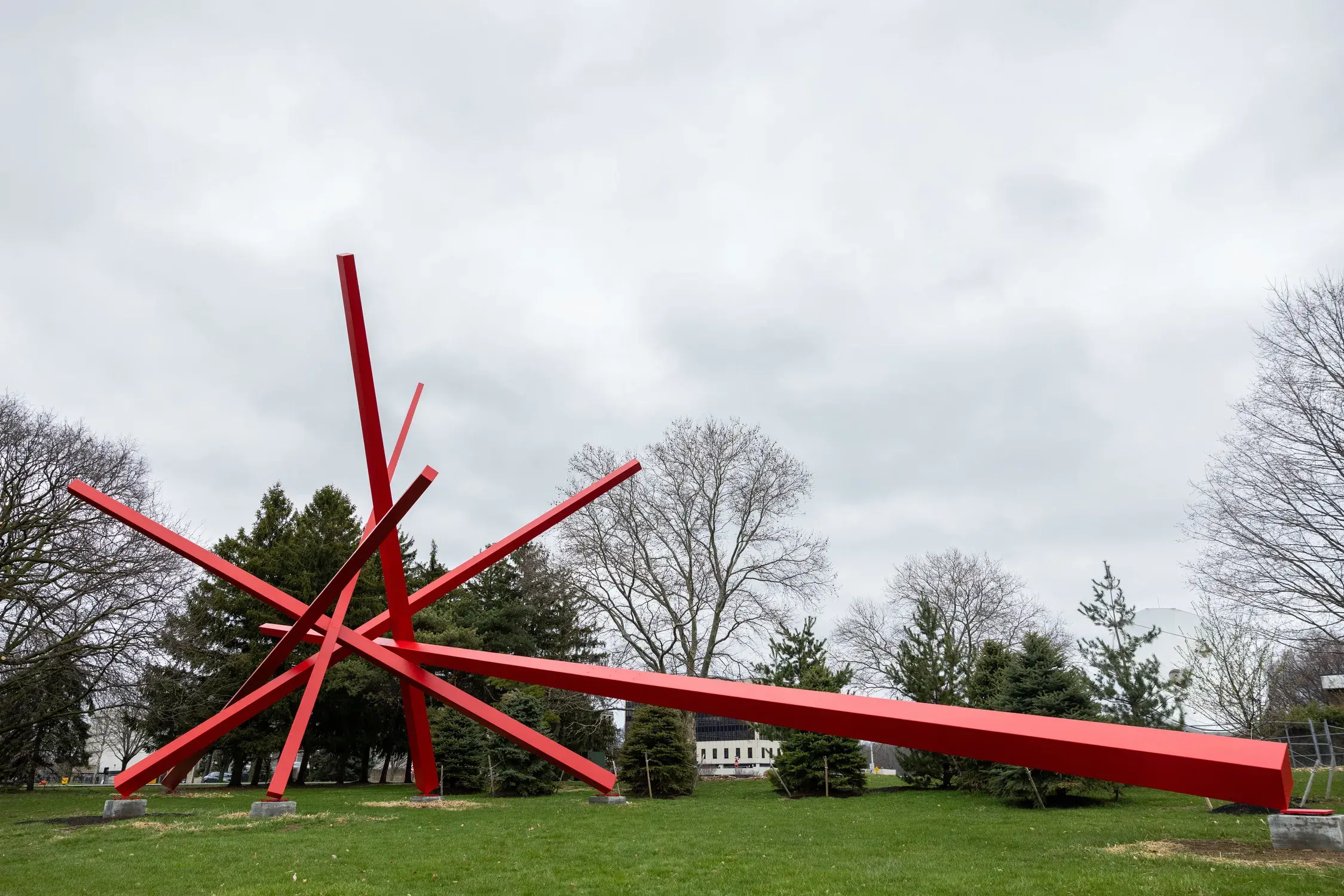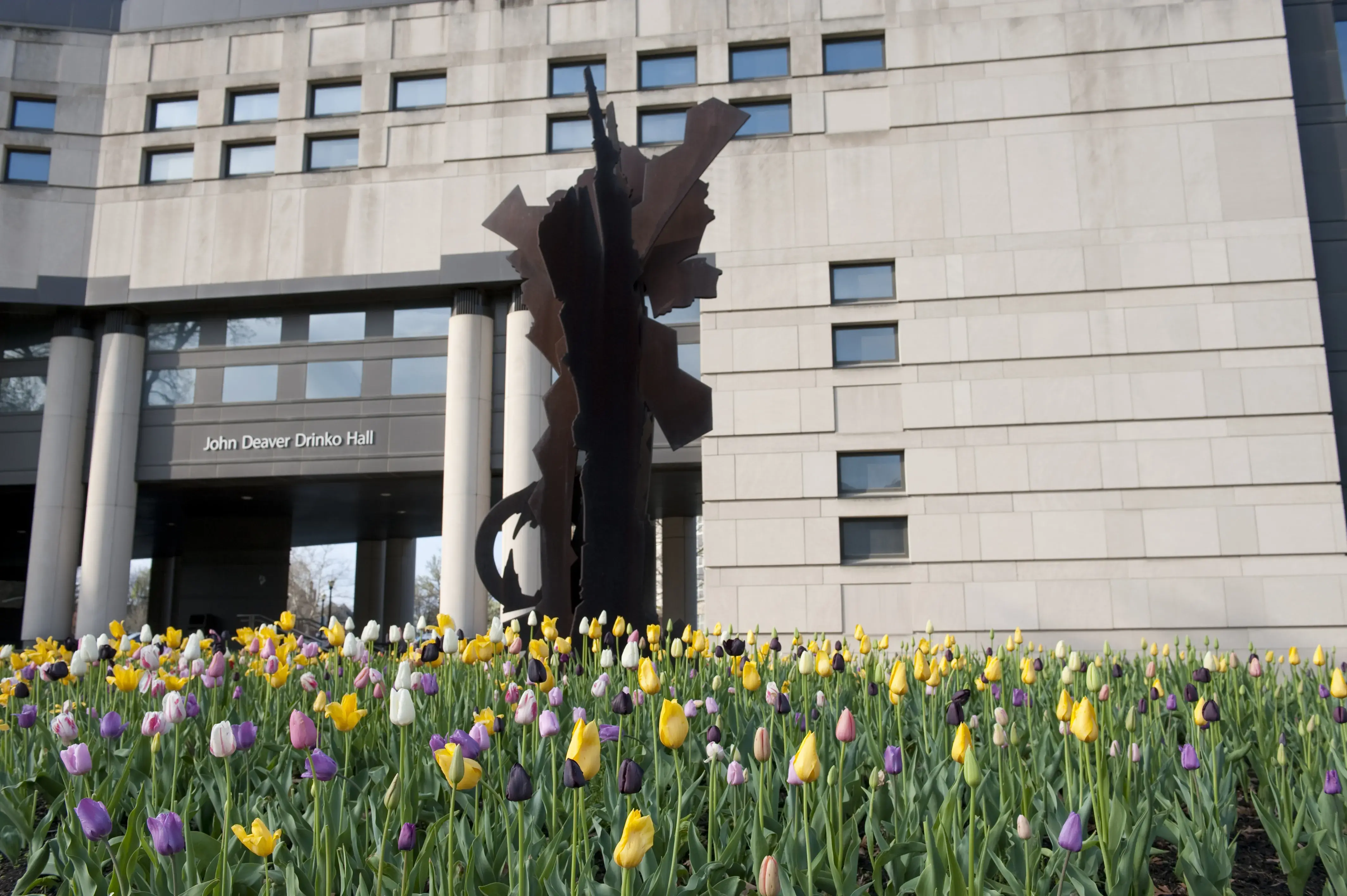
About the Art
Borealis, one of Kentucky artist John Henry’s largest sculptures, can be found on the north end of The Ohio State University campus, adjacent to the Fawcett Center. The artwork is composed of six hulking steel beams, each painted a vibrant scarlet. The monumental scale of Borealis, which stands 40 feet tall and more than 120 feet long required it to be constructed on-site. Each of the six massive beams was raised into position by crane, carefully hoisted into their present positions and precisely arranged according to the artist’s design. Though the beams are welded and bolted together, these fastenings are carefully hidden so the sculpture appears to be held together by gravity alone.
The rigidity and inflexibility of industrial steel also contrast with the sculpture’s title, Borealis. This alludes to the aurora borealis — the northern lights— wispy waves of mostly green luminescence that dance across the night sky in northern latitudes due to minute disturbances in the Earth’s magnetosphere. But where Henry’s Borealis is massive, the aurora borealis has no mass. Even so, both have the potential to change the way their viewer thinks about their relationship to the world around them. Both Borealis and the northern lights dominate their environments and create a sense of wonder at their scale. In this way, they serve as reminders that the world stretches far beyond that which a single individual can hope to experience.
Collection of The Ohio State University. Gift of Keith D. Monda (BS '68).
Material
Welded and painted steel
Location
Outside of the Fawcett Center
About the Artist
John Henry (1943-2022) was an American sculptor, known for his monumental, welded steel installations. He received his Bachelor of Fine Arts from the School of the Art Institute of Chicago in 1969 and served as both president and chairman of ConStruct, a gallery owned by artists that arranged and promoted large public art projects in the United States. An advocate for the importance of the arts in public places, Henry spent much of his time as a lecturer. His early work comprised predominately expressionist paintings, leaning into the ideas of “heroic individualism,” bold color and directness. His time in Chicago shaped his appreciation for an urban identity, driven by the city’s growing steel and glass production. Drawn to the Bauhaus style, he began designing and constructing massive, primary-colored steel sculptures. John Henry’s desire for public participation with art helped drive Chicago’s art scene. His installations feature large beams that seem to lean on each other and float simultaneously. This juxtaposition creates the feeling of being both grounded and suspended. Borealis exemplifies the cornerstones of Henry’s work and invites visitors to engage with the installation by exploring striking perspectival lines underneath the monumental red beams.


